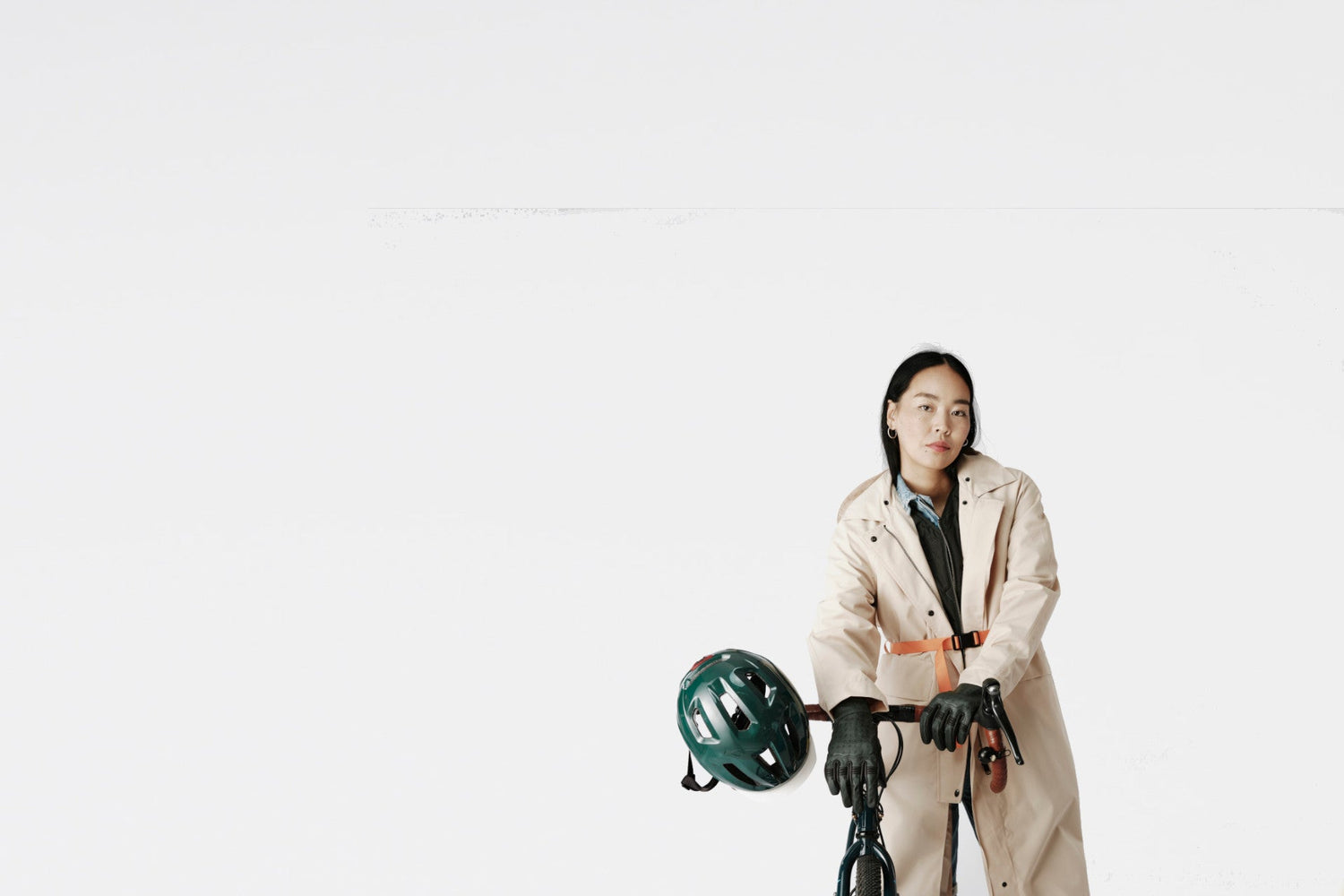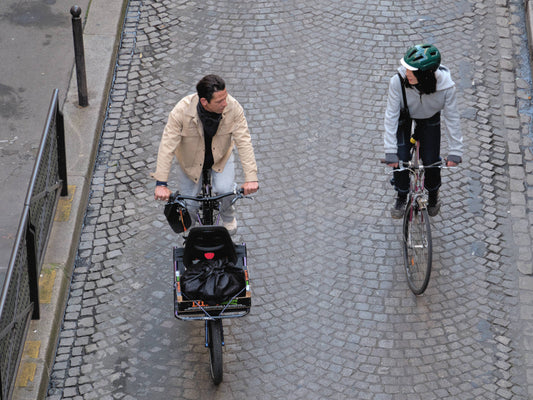The rain cape , also called a rain cape or rain poncho , is an ideal cycling outfit in the rain. We give you here some advice to choose it according to several criteria:
- Impermeability;
- Breathability;
- Security ;
- Practicality;
- Responsibility.
IMPERMEABILITY
The impermeability of a rain cape depends on:
- The water repellency and impermeability of its fabric;
- The impermeability of its seams;
- His cut and position.
TEXTILE WATER REPELLENCE
The fabric of a rain cape is water- repellent when the drops of water "slide" over it. The water repellency comes from a surface treatment applied to its outer face. The level of water repellency of a textile is defined by the EN ISO 4920 standard . You can find more information about water repellency here .

We advise you to choose a rain cape with a water repellency of 100 (ISO 5) , which is the case of the TOMO Clothing rain poncho .
TEXTILE WATERPROOFING
The impermeability of the textile can be obtained by integrating an impermeable membrane in the textile, or thanks to a specific weave . The level of impermeability of a textile is measured using theSchmerber test , defined by the EN ISO 811 standard. You will find more information on impermeability here .
We advise you to choose a rain cape whose waterproofness is greater than 8000 mm (i.e. 8 m). The TOMO Clothing rain cape has a waterproof rating of 10,000mm (10m).
WATERPROOFING OF SEAMS
It is not enough for the fabric of a rain poncho to be water-repellent and waterproof, because the water also penetrates through the holes drilled in the fabric when making the poncho at the seams. We therefore advise you to choose a cape whose seams exposed to the rain are heat-sealed or heat- sealed with sealing strips .

CAPE CUT AND POSITION
When you ride a bike in the rain, it is essential that your rain cape is correctly cut and positioned in order to protect your arms and legs from the rain, but also your back from spray coming up from your wheels.
Several solutions exist to protect your arms and legs from the rain:
- The rain cape can incorporate handles in which to pass your hands before grabbing your handlebars. The handles should be as close as possible to the edge of the cape to prevent it from flapping in the wind, or covering your front light (often attached to your handlebars or head tube). We also recommend that the coves adapt to several widths of handlebars, in order to avoid the formation of a bowl between your arms. This is the solution adopted for the TOMO Clothing rain cape .

- The rain cape can be designed for cycling with sleeves .
Several solutions exist to protect your back from splashes coming up through your wheels, by pressing the back of the rain poncho against your back. It also prevents the back of the poncho from fluttering in the wind.
- The rain poncho may include a belt to close around your waist.
- The rain cape may include snaps to close in front of you. It is this simpler and material-saving solution that TOMO Clothing has chosen for the rain hat .
BREATHABILITY
Breathability is however less essential for a rain cape than for a jacket or trousers, because a capeline is generally looser and therefore structurally more breathable. The breathability of a textile is measured by its thermal evaporative resistance (RET) . You can find more information about breathability here .

We advise you to choose a rain cape with an RET of less than 15 . The waterproof cape from TOMO Clothing has a RET of 6, and is therefore extremely breathable .
SECURITY
Bike safety starts with visibility, which itself starts with the use of white or yellow lights in the front and red in the back. These are mandatory at night, and during the day when visibility is insufficient, especially in rainy weather. We therefore advise you to choose a rain cape that does not cover your lights.
We also advise you to orient your choice on a rain poncho that incorporates retroreflective inserts , which is the case of the rain cape from TOMO Clothing.
PRACTICALITY
The hood of the rain poncho must be able to pass over your bicycle helmet, but also be shortened to be worn without a bicycle helmet. Worn over your bike helmet, the hood should not prevent you from turning your head, or limit your vision when you turn your head.
The waterproof cape should be able to easily fold into a built -in storage pocket .
RESPONSIBILITY
Like any garment, the environmental and social impact of a rain cape is due in particular to the origin of its textiles , where it was made and its recycled and/or upcycled nature . You can find more information on responsible cycling clothing here .
TOMO Clothing 's rain poncho is made from recycled textiles , made in Italy , and the rain poncho itself is assembled in Romania .



